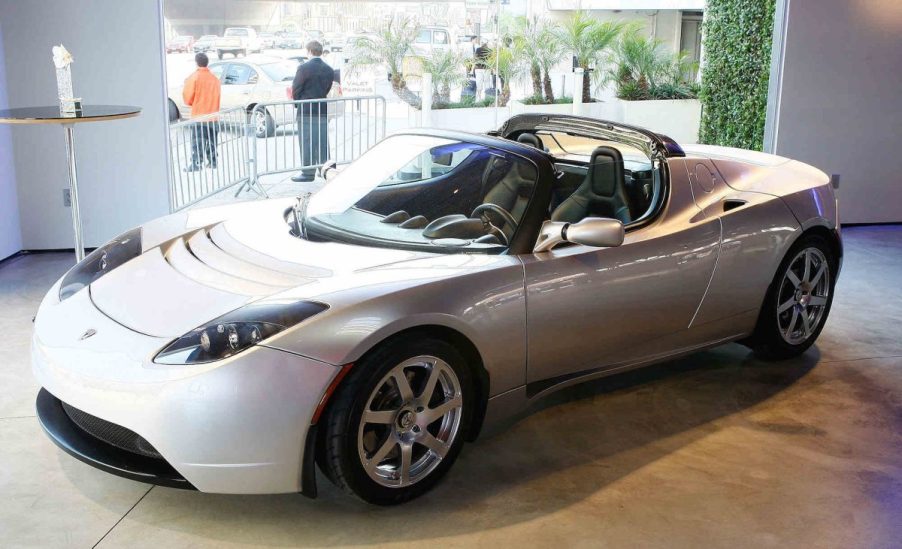
The Original Tesla Roadster Was the First Proof that EVs Could Be Fun
As we continue waiting for the next version of the Tesla Roadster, it’s hard not to think about what the first electric sports car brought to the table. The original Tesla Roadster came from humble roots but quickly showed the long-term potential for EVs. Not only was it the genesis of the biggest EV automaker we have today, but for mainstream EVs, full stop.
The Tesla Roadster redefined the EV

Until the Tesla Roadster came along in 2008, EVs weren’t catching much attention. The few that came from mainstream automakers were hilariously underpowered and barely had the range to make it across town.
The Chevy S-10 EV was an all-electric pickup that took nearly 20 seconds to hit 50 (yes, 50) miles per hour and could barely hit 40 miles from a full charge. It was a similar story for the Ford Ranger Electric that came along a year later.
The closest thing to a modern EV before the first Tesla car was the AC Propulsion eBox. Critically, though, this wasn’t an off-the-lot electric vehicle. It required buyers to purchase a Scion xB first, then ACP would install an EV swap for the same price as a Mercedes-Benz E-Class of the day.
The original Tesla Roadster, however, had none of these problems.
Power and range put the original Tesla Roadster ahead
The original Tesla Roadster wasn’t just a humdrum electric vehicle. It was built on the ultra-nimble Lotus Elise, but it’s more than just a badge-engineered experiment.
Featuring a range of 244 miles, the first electric sports car was beyond any electric vehicle that had come before it.
Even better, though, was that the Tesla Roadster was a legitimate sports car contender. At 248 horsepower and 200 pound-feet of torque, the first Tesla model boasted similar performance to more modern sports cars like the F22 BMW 228i coupe and even the early MK7 Golf GTIs.
Keep in mind, though, that the Roadster was doing this 6 years before either of those cars came along.
In 2008, the turbocharged GTI was good for just 200 horsepower. And the BMW Z4 of the day offered up just 215 ponies. For an electric sports car from a brand-new company to sit among these contenders on the spec sheet was nothing short of revelatory.
Blending the Lotus and Tesla tech to create a true EV sports car
Of course, all of that fuel-free pop was packed into one of the most revered sports car chassis of its age. The Lotus Elise earned legendary status as an ultra-nimble sports car from the moment it was introduced. Built on a concept of “simplify, and add lightness”, the entire Lotus brand centered around handling over a straight-line pace.
Add the instant torque of electric power and remove the complex packaging challenges of a combustion engine and the Tesla Roadster was an extension of that Lotus ethos beyond what traditionalists thought possible. That original electric sports car could go from zero to 60 mph in just 4.5 seconds, all while riding on one of the best-handling cars of all time.
From there, Tesla improved the formula twice. By the time Roadster 2.0 came along, the little electric pocket rocket delivered 248 horsepower and 280 pound-feet of torque. And when the final version of the original Tesla Roadster hit the road, it came with 288 ponies and 295 pound-feet of torque. At this point, it could get from zero to 60 mph in just 3.7 ticks, rivaling supercars like the Audi R8, Lamborghini Murcielago, and Ferrari 458.
Can you still buy an original Tesla Roadster today?
When new, the Tesla Roadster cost nearly $100,000 at its base price. Now though, the first Tesla sports car sells for over $250,000 as it gains collector value. Given Tesla’s iconic status as the first mainstream EV manufacturer, those values aren’t likely to drop any time soon. Tesla only made 2,450 Roadsters throughout their three-year run. And despite recent barn finds in Maryland and China, the price premium for this rare EV pioneer is here to stay.




